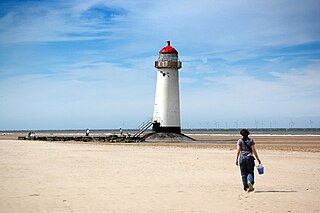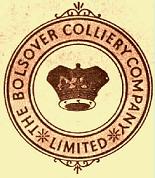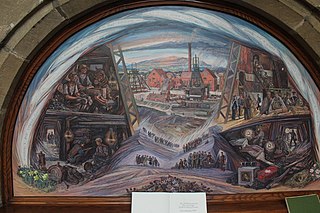Related Research Articles

Point of Ayr is the northernmost point of mainland Wales. It is situated immediately to the north of Talacre in Flintshire, at the mouth of the Dee estuary. It is to the southwest of the Liverpool Bay area of the Irish Sea. It is the site of a RSPB nature reserve RSPB Dee Estuary Point of Ayr, and is part of Gronant and Talacre Dunes Site of Special Scientific Interest.
The South Maitland coalfields was the most extensive coalfield in New South Wales until the great coal mining slump of the 1960s. It was discovered by Lieutenant-Colonel William Paterson's party when they were engaged in an exploratory visit to the Hunter Valley during July 1801.

Wet Earth Colliery was a coal mine located on the Manchester Coalfield, in Clifton, Greater Manchester. The colliery site is now the location of Clifton Country Park. The colliery has a unique place in British coal mining history; apart from being one of the earliest pits in the country, it is the place where engineer James Brindley made water run uphill.

Kiveton Park Colliery was a coal mine in the village of Kiveton Park, near Rotherham, South Yorkshire, England.

Cefn Coed Colliery Museum is a former coal mine, now operating as a museum. It is located at Crynant near Neath in the South Wales Valleys.
Steetley Colliery is a former colliery on the Derbyshire/Nottinghamshire border.
The Prestatyn Coal Company was formed in 1865, by Lord Mostyn, owner of Mostyn Colliery, to investigate the possibility of a colliery at Point of Ayr, in Flintshire, Wales.
The Point of Ayr Colliery Company was formed in 1883, and was the third company to attempt to extract coal from the North Wales Coalfield using a pit head at Point of Ayr, in Flintshire, Wales. The two previous attempts were carried out by the Prestatyn Coal Company, 1865, under the direction of Lord Mostyn, owner of the nearby Mostyn Colliery, and the Western Mostyn Colliery Company, 1873.
Mostyn Colliery was a coal mine in Flintshire, North Wales, that was owned in the later part of its operating life by the influential Mostyn family. The colliery was located at Mostyn on the banks of the River Dee.

The Bolsover Colliery Company was a major mining concern established to extract coal from land owned by the Duke of Portland. At its peak the business was a constituent of the FT 30 index of leading companies on the London Stock Exchange.

Chatterley Whitfield Colliery is a disused coal mine on the outskirts of Chell, Staffordshire in Stoke on Trent, England. It was the largest mine working the North Staffordshire Coalfield and was the first colliery in the UK to produce one million tons of saleable coal in a year.
The South Waratah Colliery was a coal mine located at Charlestown, in New South Wales Australia.

Gresford Colliery was a coal mine located a mile from the North Wales village of Gresford, near Wrexham.

The Ingleton Coalfield is in North Yorkshire, close to its border with Lancashire in north-west England. Isolated from other coal-producing areas, it is one of the smallest coalfields in Great Britain.

Bickershaw Colliery was a coal mine, located on Plank Lane in Leigh, then within the historic county boundaries of Lancashire, England.

Bradford Colliery was a coal mine in Bradford, Manchester, England. Although part of the Manchester Coalfield, the seams of the Bradford Coalfield correspond more closely to those of the Oldham Coalfield. The Bradford Coalfield is crossed by a number of fault lines, principally the Bradford Fault, which was reactivated by mining activity in the mid-1960s.
Bwllfa Colliery was a coal mine located in the Dare valley near Cwmdare in Rhondda Cynon Taf, South Wales. It operated from 1856 to 1957, remaining open as a ventilation shaft for Mardy Colliery until 1989.

Garth is a village in Bridgend County Borough, Wales. Garth is situated to the east of the town of Maesteg, and lies at the northernmost end of the Llynfi Valley. During the 19th century Garth was an industrial coal-mining village which contained its own colliery, the Garth Merthyr Colliery.

The Burnley Coalfield is the most northerly portion of the Lancashire Coalfield. Surrounding Burnley, Nelson, Blackburn and Accrington, it is separated from the larger southern part by an area of Millstone Grit that forms the Rossendale anticline. Occupying a syncline, it stretches from Blackburn past Colne to the Yorkshire border where its eastern flank is the Pennine anticline.
Barrow Colliery was a coal mine in Worsborough, South Yorkshire, England. It was first dug in 1873, with the first coal being brought to the surface in January 1876. It was the scene of a major incident in 1907 when seven miners died. After 109 years of coaling operations, the mine was closed in May 1985.
References
- ↑ "Point of Ayr Colliery". Welsh Coal Mines. Retrieved 2 December 2007.
.
